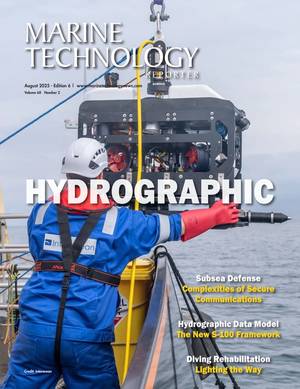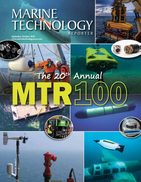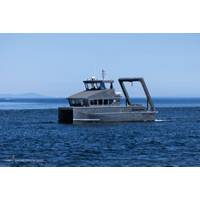
US National Lab Takes Delivery of First Hybrid Research Vessel
multiple research workstations and convertible sleeping arrangements for multiday assignments. Sustainability and operational flexibility have been enhanced via the vessel’s advanced parallel hybrid electric propulsion system.While RV Resilience can travel at speeds of up to 23 knots on its two Volvo Penta D8-510 main diesel engines, it can quickly transition to a silent, all-electric mode capable of speeds of up to 7 knots. The vessel is equipped with 113 kWh of Spear Trident batteries, Danfoss electric motors and Twin Dosc gearboxes. This silent, all-electric mode will allow the PNNL researchers
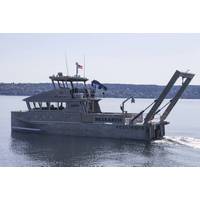
Snow & Company Delivers Hybrid Research Vessel Resilience to PNNL
for the Pacific Northwest National Laboratory.The first and only hybrid vessel in the Department of Energy's (DOE) fleet, the 50-foot aluminum catamaran was designed by Incat Crowther with propulsion integration provided by Pacific Power. Hybrid propulsion is accomplished by joining twin Volvo Penta marine engines, and two Danfoss motor-generators. Power is stored using a Spear Trident battery system.The power and propulsion setup allows the vessel to operate in a zero-emission "quiet" state at lower speeds, enabling a more effective approach for marine research. This innovative
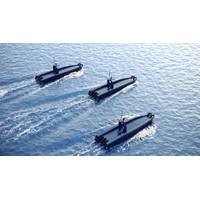
Metal Shark Debuts Prowler Autonomous Vessel and Frenzy Micro-USV
or at sea. Rear wheels are equipped with OTR-certified tires and marine brakes, and Prowler features DOT-compliant lighting. This allows Prowler to be transported over the road behind a conventional prime mover with no trailer, greatly simplifying logistics for operators.Propelled by a 300-horsepower Volvo Penta D6 Aquamatic inboard diesel engine and stern drive, the 30-foot, welded-aluminum Prowler operates as a typical surface vessel while underway, with a deep-vee planing hull delivering a 35-knot sprint speed and 500 nautical mile range.Designed for extended loitering in a semi-submerged state, Prowler&rsq
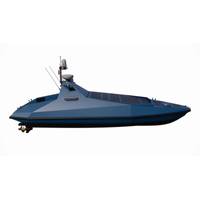
Robosys to Supply AI-driven Autonomous Control System for Legacy Marine USV
(Gqeberha), South Africa.The 9.5m USV can be launched from ashore or from floating platforms such as logistic support ships, frigates and other mothercraft, to perform patrol, surveillance, interdiction, search and rescue functions, amongst others.The USV features an aluminum hull, powered by a Volvo Penta D-6-400 engine, with steering and onboard systems, monitoring and controls, which includes payload and surveillance sensors. The USV is a versatile and multi-function platform that allows for the installation of most industry-standard sensors and effectors.The USV’s control system for autonomous
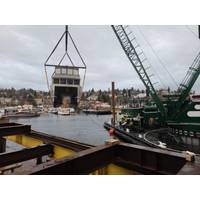
PNNL's New Research Vessel Launched
marine research facility in 2024.The Incat Crowther designed vessel, equipped with both standard diesel engines and electric motors, will be the first hybrid vessel in the DOE fleet. The vessel will be powered by an advanced parallel hybrid-electric propulsion system, consisting of two Volvo Penta D8-510 main engines, capable of producing 374 kW each, supplemented by two Danfoss Editron EM-PMI375-T200-2600 motor-generators. Power is stored using a Spear Trident battery system, allowing the vessel to operate quietly in a zero-emission electric state while engaged in a mixture of survey operationa

New Autonomous Hydrographic Survey Vessel Design Unveiled
autonomous hydrographic survey vessel design developed in collaboration with Mythos AI, Echo81, and World Marine Design.SAFE Boats has exclusive rights to build the design at its Tacoma, Wash. large-craft production facility. Merlin will be a Jones Act-compliant all-aluminum hull powered by a twin Volvo Penta D13 Hybrid-ready System with IPS. For a zero-emission power package, the Merlin can accommodate forward-thinking hydrogen technology supplied by Zero Emission Industries (ZEI). Both power options offer lower emissions and extended range to perform site assessment surveys at offshore wind energy
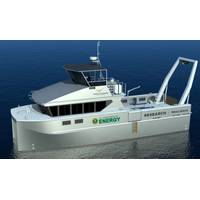
Shipbuilding: Work Starts on 50-ft. Hybrid Research Vessel
started construction of a 50-ft. hybrid research vessel for the Department of Energy's Pacific Northwest National Laboratory.Dubbed RV Resilience, the boat is designed by Incat Crowther with propulsion integration provided by Pacific Power. Hybrid propulsion will be accomplished by joining twin Volvo Penta D8-510 (374kW) marine engines, and two Danfoss Editron 20kW motor-generators. Power is stored using a Spear Trident battery system. This combination allows the vessel to operate in a zero-emission “quiet” state, which is more effective for marine research and will also reduce air pollution

Danfoss to Power US' New Hybrid-electric Research Vessel
advancing sustainable energy through decarbonization and energy storage. The new research vessel will enable PNNL-Sequim to carry out the testing and research needed to support renewable power from the ocean.The Editron division will equip the vessel with electric permanent magnet motors, with Volvo Penta providing the diesel engines. The diesel engines will be used when cruising at fast speeds up to 20 knots and over long ranges up to 3000 nautical miles. The electric motor will be used when conducting slow-speed research work for longer durations of up to 6 hours. Additionally, the electric machines

Snow & Company Building New Research Vessel for Pacific Northwest National Laboratory
Seattle shipyard Snow & Company has started building a new 15m hybrid catamaran research vessel for operation by the Pacific Northwest National Laboratory.The Incat Crowther designed vessel will be powered by an advanced parallel hybrid-electric propulsion system, consisting of two Volvo Penta D8-510 main engines, capable of producing 374 kW each, supplemented by two Danfoss Editron EM-PMI375-T200-2600 motor-generators. Power is stored using a state-of-the-art Spear Trident battery system, allowing the vessel to operate quietly in a zero-emission electric state while engaged in a mixture of survey



 August 2025
August 2025
